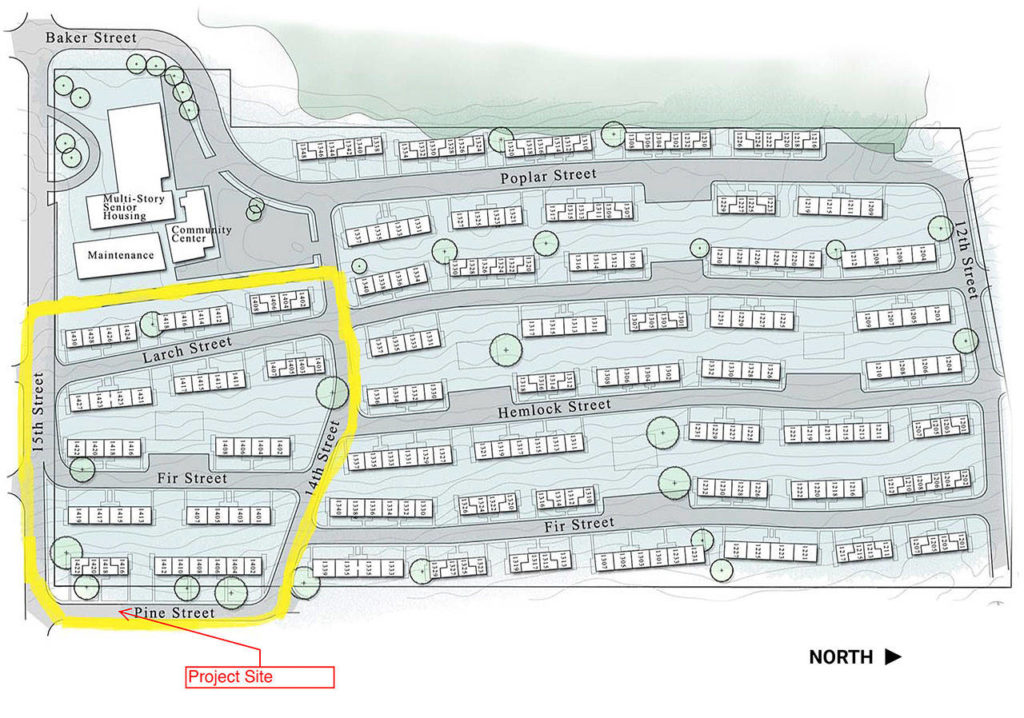EVERETT — The Everett School District has a concentration of homeless students in the north end of the city, particularly the areas served by Garfield and Hawthorne elementaries east of Broadway.
In the coming years, some of those families could become eligible for placement in a new $27.1 million housing project.
Cynthia Jones oversees the district’s programs supporting homeless students. She spoke this past June at an affordable housing conference for Everett and Snohomish County.
In the audience was Steve Yago, the Everett Housing Authority’s director of real estate acquisition.
He remembers thinking, “This is right in our back yard, and this is not being served.”
That sparked an idea that might be the first project of its kind in the region, he said.
The housing authority is seeking to build a new 82-unit complex in Everett’s Delta neighborhood. The units primarily would serve families who are homeless and have children in the school district, which would provide the referrals. Campuses served also would include North Middle School and Everett High School.
The numbers show the need. In the 2016-17 academic year, Everett schools counted 1,150 students who were homeless, and the figure is growing, according to public records.
Housing projects, both locally and nationally, are trending toward units that serve one or two people, said Ashley Lommers-Johnson, executive director of the Everett Housing Authority. One factor is the recent emphasis on serving the chronically homeless and the mentally ill. Several of those projects are under way in town.
Larger units with multiple bedrooms cost more to build and to operate, he said.
“We have made families with children a key part of future funding,” he said. “It’s part of our goal of addressing generational poverty.”
The site of the new development is what is now the Baker Heights public housing project. The buildings there have been deemed obsolete. The foundations, floor supports and roofs are failing, and the wood is rotting, according to a June letter issued by the U.S. Department of Housing and Urban Development.
The Everett Housing Authority is an independent public agency whose board members are appointed by elected city leaders. The agency has been relocating more than 240 households from Baker Heights.
Eventually the agency plans to create enough new, subsidized housing, largely through purchasing property, to offset the loss of units in the demolition of Baker Heights, Lommers-Johnson said.
“We have made a public commitment that we will replace all 244 units,” he said.
The land underneath the complex is appraised at $4.21 million, according to public records. The housing authority plans to keep 3.6 acres and sell the rest, which is about 11 acres. There has been talk about WSU Everett becoming the buyer, a notion that has drawn support from Mayor Cassie Franklin.
That’s far from final, though. Federal policy requires the housing authority to solicit bids for the property through a public process. That hasn’t started yet.
The budget for the new housing project, tentatively named the “Baker Heights Townhomes,” runs about $27.1 million. Most of that would come from federal tax credits.
Construction is scheduled in two phases. Work on the first phase, with 43 apartments, could start in spring 2019. Most of the units would have two or three bedrooms, Yago said. The second phase, with 39 town-homes, depends on funding but might follow before the end of next year. The rent rates would be based on each family’s income.
The new development would have social services on site, with an emphasis on education and employment, Lommers-Johnson said. Early in the planning, the housing authority asked the school district for feedback. The schools stressed the importance of early learning.
The district has said it likely could run a preschool at the location, primarily serving the children of tenants. If that happens, it would become one of many ways the district aims to help students who lack stable housing, Jones said.
Homelessness can be devastating to someone’s education, especially when he or she is changing schools frequently, Jones said. Those children and teens are more likely to miss classes, and less likely to graduate on time, even with district-provided transportation. The more they move around, the further behind they fall academically.
“What they really need more than anything else is a home,” Jones said.
Together the housing authority and school district will collect and compare data about outcomes for children and adults, Lommers-Johnson said.
“By pushing this project, we’re really making a statement about our values and our investment,” Lommers-Johnson said.
Rikki King: 425-339-3449; rking@heraldnet.com; Twitter: @rikkiking.
Talk to us
> Give us your news tips.
> Send us a letter to the editor.
> More Herald contact information.


























